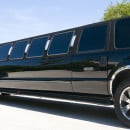When your dentist sets out to replace a missing tooth, one of the most popular solutions available remains a dental bridge. A dental bridge has many functions. At its core, however, it does exactly what it says it does - it bridges the gap between a missing tooth and a healthy tooth. Just like a bridge over a body of water, a dental bridge uses “sturdy” land (a tooth or implant) to support a construction of metal and composites (the prosthetic).
Just like there’s more than one kind of bridge used to cross from point A to point B, there’s also more than one way to bridge a gap between your teeth. However, dental bridges tend to simplify things with just three main bridge varieties, including: traditional bridges, resin-bonded bridges, and cantilever bridges.
Naturally, the most common dental bridge is the traditional bridge. A traditional dental bridge is supported by a crown or implant that’s been installed on either side of the affected tooth. In place of a rotten or missing tooth, a pontic used. Pontics are are manufactured out of ceramic or porcelain fused to metal. They can also be tinted to match surrounding teeth before being placed in the gap.
A resin-bond bridge (otherwise known as a Maryland bonded bridge) is constructed with porcelain, porcelain that’s been fused to metal, or plastic gums and teeth that are reinforced with a metal or porcelain structure. With a resin-bonded bridge, porcelain or metal wings are added to each side of the bridge which then bond to your teeth. A resin-bonded bridge is often chosen for the front teeth, due to the front teeth not enduring as much pressure when it comes to biting or chewing when compared to the back teeth. These days, dental implants are often recommended as an alternative to a resin-bonded bridge due to their greater strength and longevity.
A cantilever bridge is used when there’s only one healthy tooth adjacent to the missing tooth to be replaced. It is also often used for aesthetic reasons, when preparing the teeth on either side of the missing tooth isn’t possible. A cantilever bridge might also be used if the adjacent teeth are already being used to support another dental restoration.
How Long Do Dental Bridges Last: a dental bridge typically lasts between 5 and 15 years. Generally a fair amount of diligence and maybe even a little luck go into ensuring your dental bridge lasts longer. No matter what, brushing and flossing will undeniably help your bridge last longer.
How To Take Care of a Dental Bridge: The first part of keeping a dental bridge healthy is to keep the surrounding teeth healthy as well. In order to accomplish this, be sure to brush twice a day, with frequent flossing and rinsing with an antiseptic mouth rinse. This will help prevent gum disease and tooth decay. For some bridges, brushing and flossing should be approached differently. Before ever sending you home with a new dental bridge, your dentist will instruct you on how to properly brush and floss. Be sure to follow this advice to protect your investment and keep your smile looking great.









